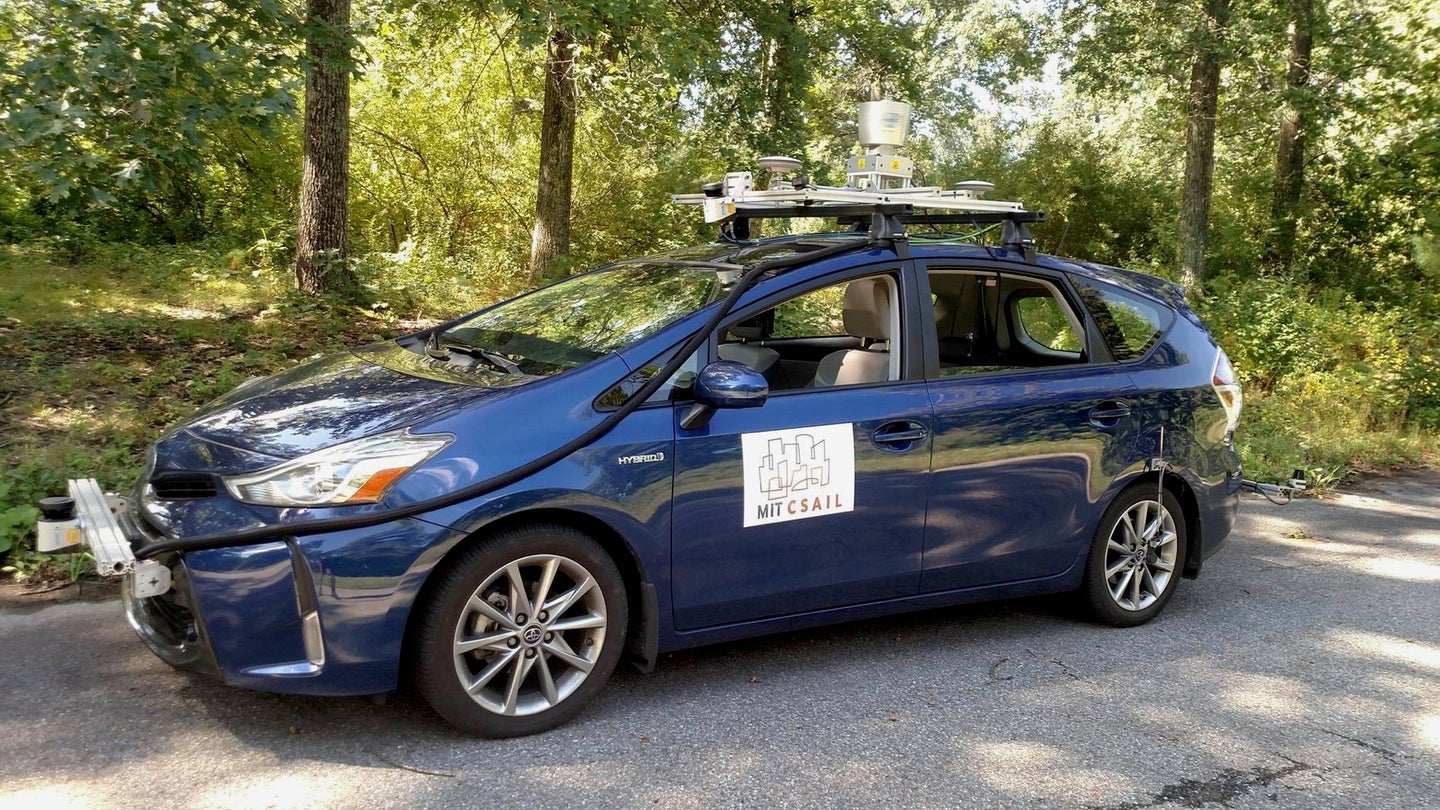MIT Teaches Self-Driving Cars to Navigate Unmapped Roads
This could allow autonomous cars to escape the big city.

Most self-driving cars rely on detailed digital maps to orient themselves, but maps with the necessary level of detail do not necessarily exist for every road. So MIT is working on a way for autonomous cars to go off the beaten path.
This could be a major development for autonomous driving. Most companies currently testing self-driving cars typically do so in major cities, where streets are well mapped, and have both clear lane markings and plenty of signs to aid navigation. MIT noted that this isn't always the case in rural areas, where even pavement can't be taken for granted.
The lack of reliable signage and clear lane markings makes rural roads more difficult to map, according to MIT. Because they also see less traffic, companies are also less willing to spend the time making accurate maps. That makes for a large swath of the United States where self-driving cars simply can't go, not to mention other countries with even less-developed road infrastructure.
To address this, MIT's Computer Science and Artificial Intelligence Laboratory developed MapLite, a system it claims will allow self-driving cars to navigate roads without digital maps.
MapLite relies primarily on sensors for navigation, using GPS data only to get a "rough estimate" of a car's location, according to MIT. When setting off, the system sets a final destination and a "local navigation goal" that's within range of the car's sensors (MIT said its prototype scanned up to 100 feet ahead in real-world tests). Once the car reaches that point, the system sets a new goal and the process repeats until the car reaches its final destination.
In tests on multiple unpaved roads around Devens, Massachusetts, MIT said a MapLite-equipped car reliably drove autonomously. The test car was a modified Toyota Prius V outfitted with lidar and IMU sensors. The Toyota Research Institute collaborated with MIT on this project.
However, MapLite isn't perfect. MIT said the system can't handle mountain roads, because it doesn't account for dramatic elevation changes. But the research team responsible for MapLite will continue to work on the system, with the goal of making it compatible for a wider variety of roads. While MapLite was developed in concert with the Toyota Research Institute, neither MIT nor the automaker are discussing production plans at this time.
